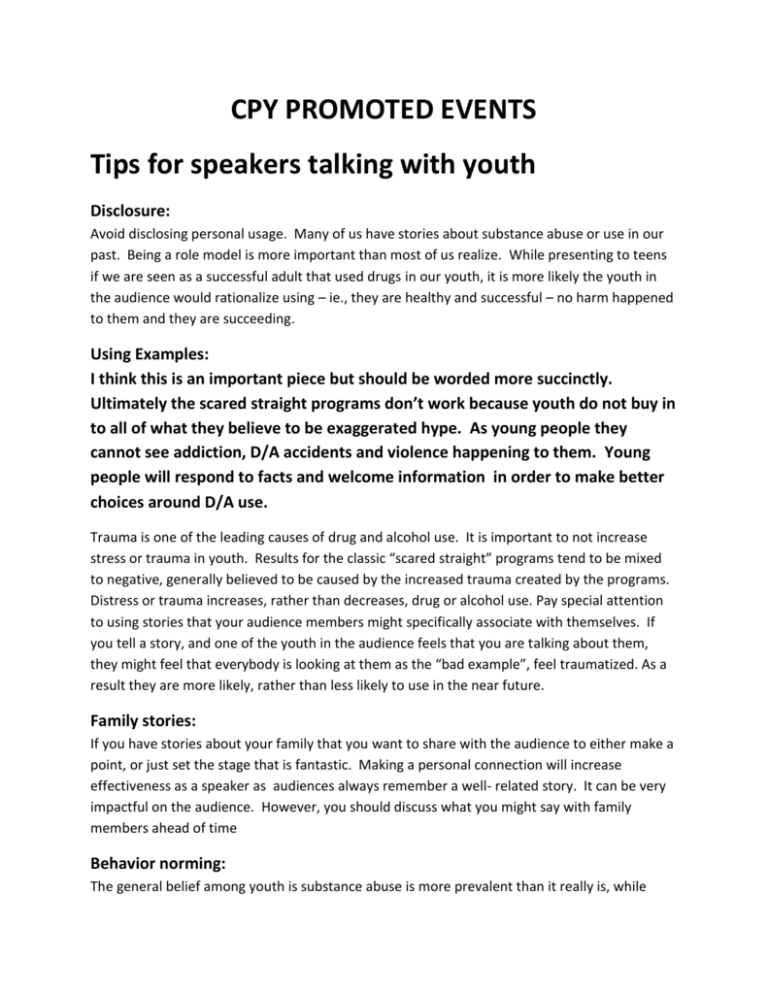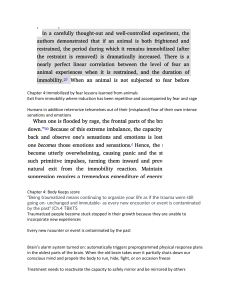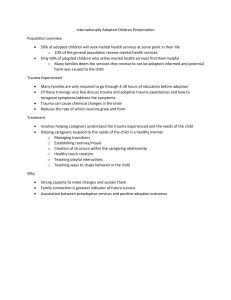Tips-for-speakers - Coalition for Placer Youth
advertisement

CPY PROMOTED EVENTS Tips for speakers talking with youth Disclosure: Avoid disclosing personal usage. Many of us have stories about substance abuse or use in our past. Being a role model is more important than most of us realize. While presenting to teens if we are seen as a successful adult that used drugs in our youth, it is more likely the youth in the audience would rationalize using – ie., they are healthy and successful – no harm happened to them and they are succeeding. Using Examples: I think this is an important piece but should be worded more succinctly. Ultimately the scared straight programs don’t work because youth do not buy in to all of what they believe to be exaggerated hype. As young people they cannot see addiction, D/A accidents and violence happening to them. Young people will respond to facts and welcome information in order to make better choices around D/A use. Trauma is one of the leading causes of drug and alcohol use. It is important to not increase stress or trauma in youth. Results for the classic “scared straight” programs tend to be mixed to negative, generally believed to be caused by the increased trauma created by the programs. Distress or trauma increases, rather than decreases, drug or alcohol use. Pay special attention to using stories that your audience members might specifically associate with themselves. If you tell a story, and one of the youth in the audience feels that you are talking about them, they might feel that everybody is looking at them as the “bad example”, feel traumatized. As a result they are more likely, rather than less likely to use in the near future. Family stories: If you have stories about your family that you want to share with the audience to either make a point, or just set the stage that is fantastic. Making a personal connection will increase effectiveness as a speaker as audiences always remember a well- related story. It can be very impactful on the audience. However, you should discuss what you might say with family members ahead of time Behavior norming: The general belief among youth is substance abuse is more prevalent than it really is, while adults under estimate the actual usage rates. This creates a problem when talking about usage rates to a mixed audience as you want “opposite” messages. A line like “while many youth use alcohol (or pot, or other drugs), most youth DO NOT use them. The number that do use is very concerning.”











